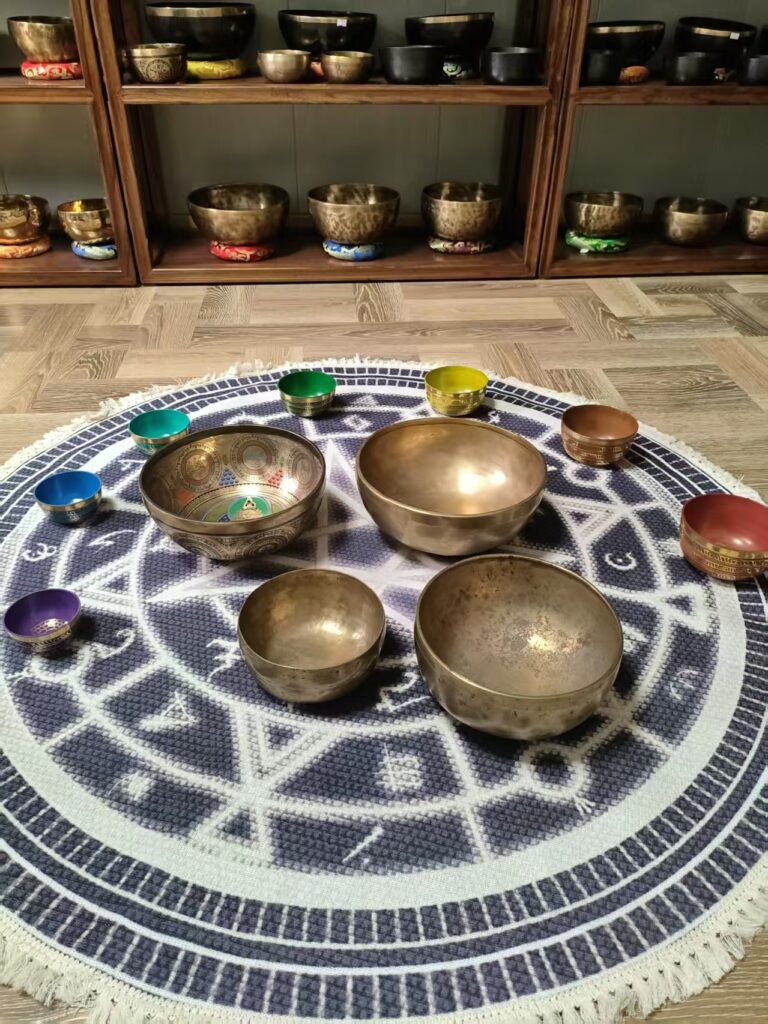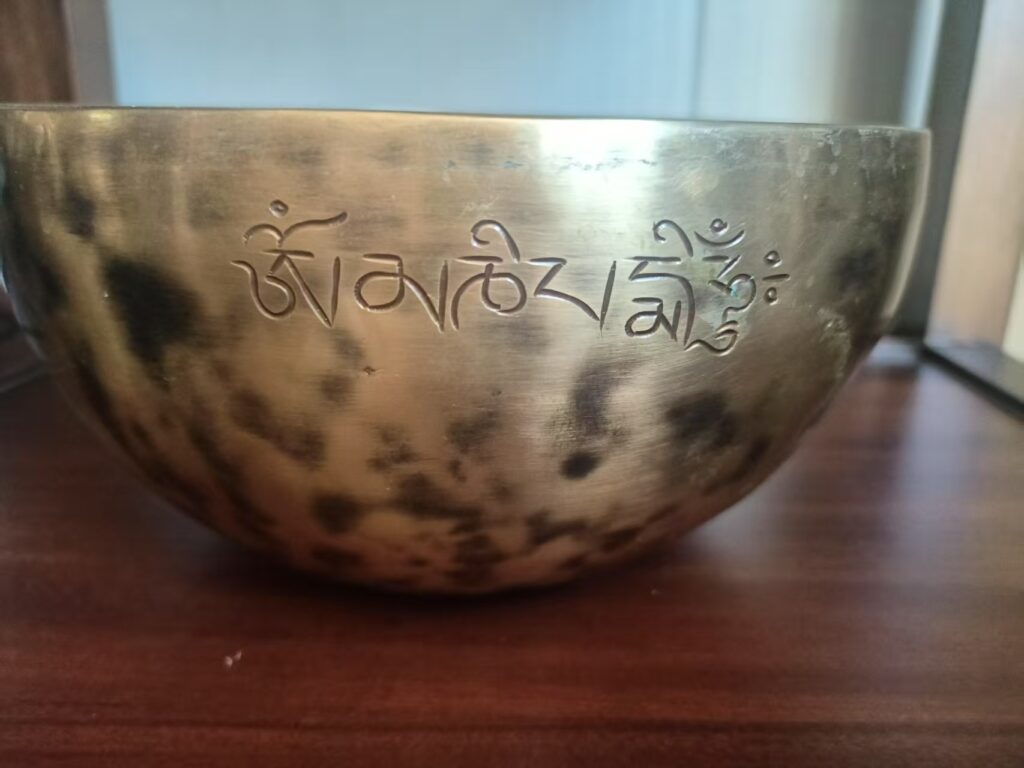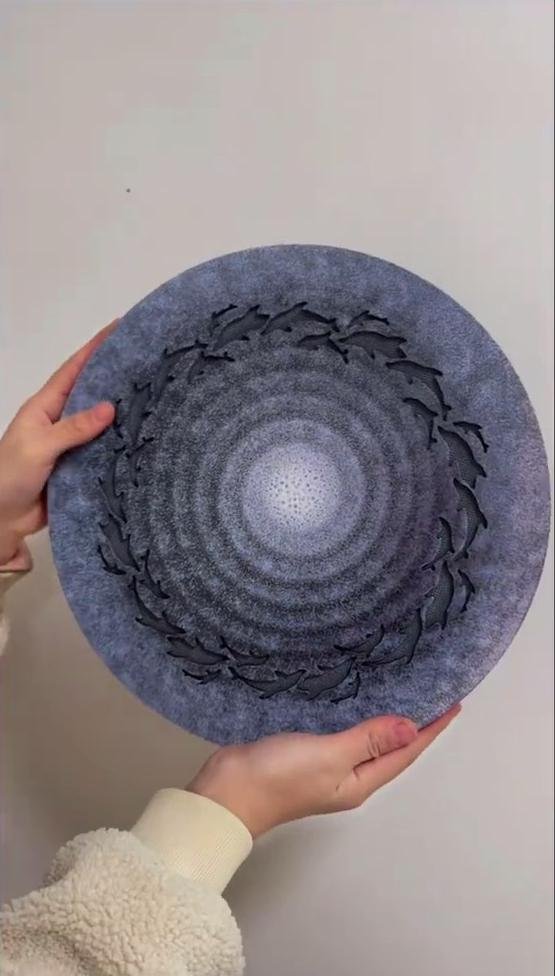Selecting the right singing bowl can transform your meditation practice, enhance your therapeutic work, or deepen your spiritual journey. With countless options available across various materials, sizes, and price points, making an informed choice requires understanding how different characteristics affect both sound quality and practical applications. This comprehensive guide will walk you through every aspect of choosing a singing bowl that perfectly matches your needs, budget, and aspirations.

Understanding Your Purpose: Personal vs. Professional Use
The foundation of choosing the right singing bowl begins with clearly defining your intended use. Different applications require distinct characteristics, and understanding these requirements will guide every subsequent decision in your selection process.
Personal Meditation and Mindfulness Practice
For individual meditation practitioners, the ideal singing bowl serves as a consistent companion in daily practice, creating a bridge between ordinary consciousness and contemplative awareness. Personal use bowls prioritize comfort, ease of handling, and the ability to create a meditative atmosphere in intimate settings without overwhelming sensitive neighbors or household members.
When you settle into daily meditation with a properly chosen personal bowl, the instrument becomes an extension of your practice rather than a distraction from it. The size considerations for personal practice typically favor bowls between four and seven inches in diameter, offering optimal balance between satisfying sound quality and comfortable portability. These medium-sized instruments provide enough acoustic presence to support focused attention while remaining light enough for extended holding during various meditation postures.
Weight becomes particularly important for personal practice, as bowls ranging from one to three pounds ensure you can maintain comfortable positions throughout extended sessions without developing fatigue that interferes with concentration. The consistent tone production that characterizes quality personal instruments eliminates the frustration of unreliable sound quality that can disrupt meditative states and discourage regular practice.
Budget considerations for personal bowls typically range from fifty to two hundred dollars, providing access to excellent quality instruments that will support years of meaningful practice without requiring professional-level investment. The frequency preferences for personal meditation often center around mid-range tones spanning two hundred to four hundred hertz, creating the perfect balance between relaxing lower frequencies and alerting higher tones.
Professional Sound Therapy Applications

Professional sound therapists require instruments that deliver consistent therapeutic results across diverse client populations and treatment environments. These demanding applications necessitate acoustic precision with clearly defined frequencies and minimal harmonic distortion that could interfere with specific therapeutic protocols or client comfort.
Extended sustain duration becomes crucial for professional work, as therapeutic applications often require continuous sound lasting sixty seconds or more to facilitate the deep relaxation states necessary for healing work. The volume range capabilities must accommodate both gentle background tones for sensitive clients and room-filling sounds for group sessions or larger treatment spaces.
Durability standards for professional instruments must withstand frequent use and regular transportation between treatment locations while maintaining consistent acoustic properties over time. Professional practice typically requires multi-bowl systems that cover the complete therapeutic frequency spectrum, including low frequency bowls ranging from one hundred to two hundred fifty hertz for deep relaxation and grounding work, mid-range instruments spanning two hundred fifty to four hundred fifty hertz for emotional balance and heart-centered healing, and high frequency bowls above four hundred fifty hertz for mental clarity and spiritual connection.
The investment considerations for professional setups typically require between three hundred and fifteen hundred dollars for comprehensive therapeutic collections that serve diverse client needs while maintaining the quality standards necessary for effective professional practice.
Group Meditation and Workshop Leadership
Leading group sessions presents unique challenges requiring bowls with specific acoustic properties that can effectively reach and engage multiple participants simultaneously. Projection power becomes essential, typically requiring larger bowls of eight inches or more to provide adequate room coverage that reaches all participants equally without forcing uncomfortable volume levels.
Visual appeal contributes significantly to group experiences, as attractive instruments enhance the overall aesthetic of group sessions while supporting the sacred atmosphere that many participants seek. Reliability becomes paramount when working with groups, as inconsistent performance can disrupt collective meditation experiences and undermine instructor credibility.
The size requirements for group leadership often favor larger instruments that command attention and respect while providing the acoustic authority necessary for guiding diverse groups of varying experience levels and sensitivity to sound.
Size Matters: How Bowl Diameter Affects Sound and Application

Bowl diameter serves as the primary factor determining fundamental frequency, volume capacity, and practical usability, making size selection one of the most crucial decisions in the purchasing process.
Small Bowls (3-5 inches): Precision and Portability
Small singing bowls offer exceptional portability and specialized applications that make them valuable tools despite their obvious size limitations. Their acoustic characteristics typically produce fundamental frequencies in the four hundred to one thousand hertz range, creating bright, penetrating tones that cut through ambient noise while providing quick response to minimal playing technique.
The sustain duration for quality small bowls typically ranges from fifteen to thirty seconds, providing adequate time for focused attention while avoiding the overwhelming persistence that larger bowls can create in small spaces. Their limited volume output remains sufficient for personal practice and intimate settings while maintaining the discretion necessary for shared living environments or noise-sensitive locations.
Practical applications for small bowls include travel meditation where their compact size and light weight make them ideal companions for maintaining practice consistency regardless of location. They excel in chakra work focused on higher energy centers, particularly throat, third eye, and crown chakras where their frequency ranges align with traditional associations. Their precision capabilities make them perfect for targeted sound application to specific body areas during therapeutic work, while their manageable size makes them excellent choices for introducing children to singing bowl practice.
Medium Bowls (6-8 inches): The Versatile Choice
Medium-sized singing bowls represent the most popular category among practitioners, offering optimal balance of acoustic properties, practical usability, and versatile applications that serve the widest range of needs and preferences. Their acoustic properties typically produce fundamental frequencies spanning two hundred to five hundred hertz, encompassing the therapeutic sweet spot for most healing and meditation applications.
Quality medium bowls provide sustain duration ranging from forty-five to seventy-five seconds, offering adequate time for deep listening and contemplation while remaining manageable in various acoustic environments. Their volume range proves suitable for both personal practice and small group settings, providing enough presence to support group work without overwhelming intimate spaces.
The tonal complexity achievable with medium bowls includes rich harmonic content that adds interest and depth without creating overwhelming complexity that can distract from meditative focus. This balance makes them ideal for developing technique in both striking and rim playing while providing enough acoustic satisfaction to maintain long-term practice interest.
Their versatility advantages include multi-application use spanning meditation, therapy, and group work, making them excellent investments for practitioners whose needs may evolve over time. They provide ideal platforms for technique development while often representing the best value proposition in terms of capability per dollar invested.
Large Bowls (9+ inches): Power and Presence
Large singing bowls command attention through their deep, powerful tones and impressive physical presence that can transform entire spaces into sacred acoustic environments. Their acoustic dominance produces fundamental frequencies typically ranging from one hundred to three hundred hertz, creating the grounding and deeply relaxing effects valued in therapeutic applications.
Quality large bowls provide sustain duration exceeding ninety seconds, enabling extended contemplative experiences that support profound meditative states. Their volume capacity creates room-filling sound suitable for large groups while generating vibrations strong enough to be felt physically throughout the body.
Professional applications for large bowls center on sound bath leadership where they serve as primary instruments for group healing sessions, deep relaxation work where their profound calming effects address chronic stress and trauma, and grounding practices focused on root chakra activation and foundational energy work.
Handling considerations for large bowls include weights typically ranging from five to fifteen pounds or more, requiring stable support systems for extended use and careful attention to proper playing technique. Their substantial presence demands appropriate storage and transport solutions while representing significant investments that require thoughtful selection and proper care.
Check available size of singinig bowl: https://dorhymigroup.com/product-category/singing-bowl/
Material Guide: Metal Alloys vs. Crystal vs. Hybrid Options
The material composition fundamentally determines acoustic character, durability, maintenance requirements, and aesthetic appeal, making material selection one of the most important decisions affecting long-term satisfaction with your instrument.
Traditional Metal Alloys
Bronze alloys represent the professional standard for high-quality singing bowls, with bell bronze composition utilizing seventy-eight percent copper and twenty-two percent tin to create exceptional acoustic properties. This traditional formulation produces exceptional clarity with long sustain duration and complex harmonic development that supports both therapeutic and spiritual applications.
The sound character of bronze bowls features warm, rich tones with excellent projection capabilities that fill spaces effectively without harshness or aggressive characteristics. Professional usage favors bronze alloys for their consistency and reliability in demanding applications, while their investment value provides excellent long-term returns despite higher initial costs.
Brass alloys offer excellent entry-level quality with consistent performance characteristics that serve most practitioners well while remaining accessible to budget-conscious buyers. Standard brass composition incorporating sixty to seventy percent copper with thirty to forty percent zinc creates bright, clear tones with good projection and forgiving playing characteristics that support skill development.
The consistency achievable through machine manufacturing of brass instruments enables reliable quality control while maintaining affordability through lower material and labor costs. Their beginner-friendly characteristics include forgiving response to varying technique while providing satisfying acoustic results that encourage continued practice.
Crystal Singing Bowls: Pure Frequency Precision
Crystal singing bowls offer unique acoustic properties through pure quartz construction utilizing ninety-nine point nine percent silicon dioxide to create instruments with remarkable frequency purity and minimal harmonic distortion compared to metal alternatives. Their sustain duration can exceed two to three minutes for large, quality instruments while providing powerful sound projection with crystalline clarity.
The resonance behavior of crystal bowls differs significantly from metal instruments, often producing more penetrating effects that some practitioners find more intense or direct in their impact. Clear crystal bowls generate bright, penetrating tones with excellent projection, while frosted crystal alternatives provide softer, warmer characteristics that prove less intense and more suitable for sensitive individuals.
Colored crystal bowls incorporate various minerals during manufacturing to create instruments with distinct visual appeal and claimed specific properties, though scientific validation of these enhanced characteristics remains limited. The selection between clear and frosted options depends largely on personal preference and sensitivity to intensity levels.
Material Selection Criteria
Sound preference priorities guide material selection based on desired acoustic characteristics. Traditional bronze alloys excel for warm, complex tones with rich harmonic content, while brass alloys and clear crystal provide bright, clear sounds with excellent definition. Crystal bowls offer pure, precise frequencies with minimal harmonic distortion, while hand-hammered traditional metals create the richest harmonic complexity.
Practical considerations include durability requirements where metal bowls generally prove more robust for heavy use, maintenance preferences where brass and crystal offer easier cleaning and care, weight limitations where crystal often provides lighter alternatives to large metal bowls, and budget constraints where brass represents the most affordable option while precious metal alloys command premium pricing.
Sound Quality Assessment: Testing Frequency, Sustain, and Harmonics
Evaluating sound quality requires understanding acoustic principles that distinguish exceptional singing bowls from mediocre instruments, enabling informed decisions that lead to long-term satisfaction with your investment.
Fundamental Frequency Analysis
Quality bowls maintain consistent fundamental frequency across different playing techniques and environmental conditions, providing reliable acoustic performance regardless of temperature, humidity, or playing style variations. Frequency range appropriateness depends on intended applications, with deep relaxation work benefiting from one hundred to two hundred fifty hertz ranges that promote grounding and calming effects.
Meditation focus typically benefits from two hundred fifty to five hundred hertz ranges that provide balanced awareness without excessive stimulation or sedation, while mental clarity applications often utilize frequencies above five hundred hertz that support alertness and concentration without creating agitation or stress.
Sustain Duration and Decay Characteristics
Sustain measurement standards provide objective criteria for evaluating instrument quality. Minimum quality instruments provide thirty seconds or more of audible sustain for medium-sized bowls, while good quality instruments typically sustain for forty-five to sixty seconds across most applications. Excellent quality bowls maintain sixty to ninety seconds or more of sustain duration, while professional grade instruments often exceed ninety seconds with graceful decay curves that add musical beauty to the extended resonance.
Factors affecting sustain include wall thickness optimization that varies by size but significantly impacts sustain duration, material quality where pure alloys and high-grade crystal enable longer resonance, and construction precision involving uniform wall thickness and careful craftsmanship that maximizes acoustic efficiency.
Harmonic Content Evaluation
Quality indicators in harmonic content include clean fundamental frequencies with strong, clear primary tones that form the foundation for all other acoustic elements. Balanced overtones support rather than compete with fundamental frequencies, creating harmonious relationships that enhance rather than muddy the overall sound quality.
Smooth harmonic transitions develop gradually during decay periods, creating evolving acoustic experiences that maintain interest throughout extended sustain periods. Pleasant beating effects result from subtle frequency interactions that create warmth and organic character without dissonance or harsh characteristics.
Warning signs include harsh overtones that create dissonant or unpleasant harmonic content, missing fundamentals where weak primary frequencies become dominated by overtones, and chaotic harmonics producing random, non-musical frequency relationships that interfere with meditative focus.
Budget Planning: Quality vs. Price Across Different Categories
Understanding the relationship between price and quality helps buyers make informed decisions that maximize value while meeting specific needs and expectations within realistic budget constraints.
Entry-Level Category ($30-$80): Foundation Quality
Entry-level singing bowls typically utilize standard brass alloys with sixty to seventy percent copper and thirty to forty percent zinc content, providing reliable acoustic performance at accessible prices. Machine-made construction with basic finishing ensures consistent quality control while maintaining affordability through efficient production methods.
Size ranges usually span four to seven inches, optimal for learning basic techniques and personal practice applications. Sound quality features clean, clear tones with moderate sustain typically lasting twenty to forty seconds, providing adequate performance for developing skills and establishing regular practice routines.
Best applications for entry-level instruments include beginning practice focused on learning striking and rim techniques, personal meditation supporting daily mindfulness and relaxation practices, and travel applications where portable options enable maintaining practice consistency regardless of location.
Mid-Range Category ($80-$250): Enhanced Performance
Enhanced manufacturing standards in the mid-range category include better alloys with higher copper content bronze or premium brass compositions that improve acoustic properties while maintaining reasonable costs. Improved craftsmanship often involves hand-finishing details applied to machine-made bowls, while more rigorous quality control ensures higher consistency and performance standards.
Sound quality improvements include extended sustain duration typically ranging from forty-five to seventy-five seconds for medium-sized bowls, richer harmonic development creating more complex and pleasant overtone relationships, and better volume range providing improved dynamic response to varying playing intensities.
Professional suitability becomes achievable in the mid-range category, as many instruments meet professional standards for sound therapy and meditation instruction while remaining accessible to serious amateur practitioners building comprehensive collections.
Professional Grade ($250-$600): Superior Craftsmanship
Master craftsmanship elements distinguish professional grade instruments through hand-hammered construction utilizing traditional techniques that create unique tonal characteristics impossible to achieve through machine production alone. Premium alloys including bell bronze, seven-metal compositions, or high-grade crystal provide superior acoustic properties that justify higher investment levels.
Acoustic optimization involves precisely calibrated wall thickness and rim geometry that maximizes resonance efficiency while acoustic excellence features extended sustain exceeding seventy-five seconds with graceful decay characteristics. Complex harmonic development creates rich, evolving overtone series that continue developing throughout extended duration periods, while professional volume capabilities prove suitable for large rooms and group applications.
Investment Strategies
Progressive investment approaches enable many practitioners to begin with mid-range instruments and gradually add professional-grade pieces as their practice develops and requirements become more sophisticated. Value maximization techniques include taking advantage of seasonal sales and promotional periods, purchasing directly from manufacturers when possible to eliminate retail markup, and considering package deals where complete sets often provide better per-instrument value than individual purchases.
Quality Indicators: Identifying Authentic vs. Mass-Produced Bowls
Understanding distinguishing characteristics between authentic craftsmanship and mass-produced instruments helps buyers avoid misrepresentation while ensuring their investments support genuine cultural traditions and superior acoustic performance.
Authentic Craftsmanship Markers
Hand-hammering evidence appears through visible tool mark patterns showing individual stroke sequences, organic irregularities indicating human craftsmanship rather than machine precision, and subtle thickness variations throughout the bowl that optimize acoustic properties through skilled manipulation. Surface texture varies naturally reflecting hand-tool work rather than uniform machine finishing.
Acoustic authentication reveals individual voice characteristics that distinguish each bowl from others of similar size and material, harmonic complexity featuring rich, evolving overtone content that develops uniquely in each instrument, and organic resonance quality that feels alive and breathing rather than mechanical or sterile.
Mass Production Identification
Manufacturing uniformity signs include perfect mathematical symmetry indicating machine forming, uniform surface finish throughout all areas, identical dimensions across production batches, and consistent weights for same-size bowls that exceed natural variation ranges.
Acoustic standardization produces identical frequencies for same-size bowls, predictable harmonic patterns across production runs, and uniform sustain characteristics for identical models that lack the individual character of authentic craftsmanship.
Market Misrepresentation Awareness
Common misleading claims include false authenticity where new bowls are represented as old or vintage, cultural misrepresentation claiming mass-produced bowls as traditional artifacts, exaggerated material claims asserting seven-metal composition without verification, and therapeutic overclaims making unsubstantiated health benefit assertions.
Testing Methods: In-Person vs. Online Purchase Strategies
The method of bowl evaluation significantly affects the likelihood of finding an instrument that meets expectations and provides long-term satisfaction with both acoustic performance and practical usability.
In-Person Selection Advantages
Comprehensive sensory evaluation enables hearing the complete acoustic spectrum without recording compression that can mask important frequency content, testing dynamic range across soft to strong playing intensities, tactile evaluation revealing weight distribution and surface quality, and visual inspection showing construction quality details invisible in photographs.
Comparative shopping allows side-by-side comparison of multiple instruments, enabling informed decision-making based on direct acoustic and physical differences. Expert consultation from knowledgeable retailers provides valuable guidance about construction methods, materials, and cultural context that enhances understanding and appreciation.
Online Purchase Optimization
Research and preparation strategies include investigating seller reputations through reviews and business ratings, analyzing detailed specifications and technical information, evaluating audio samples demonstrating different playing techniques, and examining comprehensive photography from multiple angles showing construction details.
Risk mitigation involves understanding return and exchange policies that protect buyers, obtaining appropriate insurance coverage for valuable investments, adopting gradual investment approaches that build experience through progressive purchasing, and selecting beginner-friendly features that forgive developing technique.
Beginner-Friendly Features: What First-Time Buyers Should Prioritize
First-time buyers benefit from understanding which characteristics make instruments easier to learn with while providing room for growth as skills and understanding develop over time.
Forgiving Sound Characteristics
Beginning practitioners need instruments that respond well to developing technique through gentle response curves producing pleasant sounds across wide ranges of playing intensities. Clear fundamental frequencies with strong primary tones help understand technique-sound relationships while moderate sustain duration of thirty to forty-five seconds provides adequate time without overwhelming quiet environments.
Volume appropriateness enables good control for shared living spaces while size and weight considerations favor medium-sized bowls spanning five to seven inches that offer optimal balance of acoustic satisfaction and physical manageability. Well-balanced instruments feel stable and comfortable, allowing beginners to focus on technique development rather than struggling with awkward handling.
Material Recommendations
Brass alloys often provide the most beginner-friendly characteristics through consistent response, good durability, reasonable affordability, and easy maintenance requirements. Bronze alternatives offer room for skill development through richer sound complexity and professional potential while remaining accessible to serious beginners.
Budget-conscious quality indicators include clear sound production with fundamental frequency clarity, adequate sustain meeting minimum duration standards, structural integrity without visible flaws, and consistent response providing predictable sound production across playing ranges.
Professional Considerations: Building a Therapeutic Bowl Collection
Professional sound therapists require carefully curated instrument collections that meet diverse client needs while maintaining the quality standards necessary for effective therapeutic outcomes and professional credibility.
Frequency Range Coverage
Low frequency foundation instruments spanning eighty to two hundred fifty hertz support physical relaxation through muscular tension release, nervous system calming via deep tone activation of parasympathetic responses, and root chakra work promoting grounding energy for stability and security. Professional requirements typically involve large bowls exceeding nine inches with sustain duration exceeding ninety seconds.
Mid-range therapeutic frequencies covering two hundred fifty to five hundred hertz address emotional balance through heart chakra and emotional processing work, general relaxation suitable for most clients, and versatile applications across various therapeutic modalities. Professional collections typically include three to four bowls covering different mid-range aspects.
High frequency precision above five hundred hertz supports mental clarity enhancement, energy activation through stimulating frequencies, and chakra balancing focused on upper energy centers and spiritual connection work.
Client Accommodation Strategies
Sound sensitivity considerations require gentle introduction instruments with soft-toned, non-threatening characteristics, precise volume control capabilities, and trauma-informed approaches using predictable, non-startling acoustic properties. Medical condition accommodations include emphasis on tactile vibration and lower frequencies for hearing impairments, avoiding triggering frequencies with gentle transitions for neurological sensitivities, and age-appropriate approaches for children, adults, and elderly clients.
Professional Durability Requirements
High-use durability standards ensure instruments maintain quality through daily sessions, resist damage during transport for mobile practice, tolerate regular sanitization requirements, and provide acoustic stability with consistent sound characteristics despite heavy use.
Business and investment considerations include initial investment strategies focusing on core collections covering basic therapeutic needs with quality priority and strategic expansion planning. Professional development investments support continued education, technique advancement, and specialization while return on investment optimization ensures quality instruments support positive client outcomes, practice efficiency, and reputation building.
Conclusion
Choosing the proper singing bowl requires careful consideration of your intended use, budget, and personal preferences while understanding how different characteristics affect both acoustic performance and practical applications. Whether seeking a simple meditation companion or building a professional therapeutic collection, informed decision-making based on clear criteria ensures satisfaction and meaningful practice for years to come.
Remember that the perfect bowl varies significantly based on individual needs and circumstances. An instrument ideal for personal meditation might prove unsuitable for professional sound therapy, while a bowl perfect for group leadership could overwhelm intimate personal practice. Success lies in clearly understanding your requirements and systematically evaluating options against those specific criteria.
Quality singing bowls represent investments in both personal practice and cultural tradition preservation. By making informed choices and maintaining high standards for quality and authenticity, buyers contribute to preserving valuable healing traditions while ensuring positive experiences with these remarkable instruments that have served spiritual and therapeutic purposes for centuries.
Take time to research thoroughly, test instruments when possible, and choose with both practical wisdom and intuitive guidance. Your singing bowl will likely become a treasured companion in your journey toward greater awareness, healing, and inner peace, providing reliable support for whatever spiritual or therapeutic path you choose to follow.







